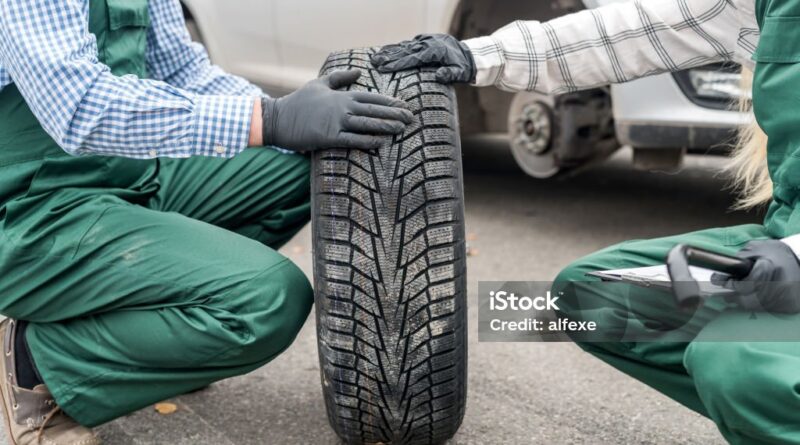How to Choose Tires for Rainy Weather Driving?
Driving in heavy rain and flood conditions presents unique challenges that require specialized tires designed to provide optimal traction and safety. When the roads are slick and visibility is poor, having the right set of tires can make all the difference in maintaining control and avoiding accidents.
Tires play a critical role in how your vehicle handles wet and potentially hazardous driving conditions. The tread pattern, rubber compound, and overall design of a tire can significantly impact its ability to channel water, resist hydroplaning, and provide a reliable grip on rain-soaked roads.
Equipping your vehicle with the best tires for heavy rain and flood conditions is an investment in your safety and peace of mind. By choosing tires that are engineered to perform well in wet weather, you can confidently navigate through stormy conditions and arrive at your destination safely.
What Are the Best Tires for Driving in Heavy Rain?
Tires designed specifically for wet conditions feature unique tread patterns and rubber compounds that provide superior traction on slick roads. These tires are engineered to efficiently channel water away from the contact patch—the area where the tire meets the road—and maintain a secure grip, even in heavy downpours.
When shopping for rain tires, look for models with deep grooves and sipes (small slits in the tread blocks). These design elements work together to evacuate water from beneath the tire, reducing the risk of hydroplaning—a dangerous situation where the tire loses contact with the road surface and rides on top of a thin layer of water.
All-weather tires, like those offered at Simple Tire, are an excellent choice for drivers who frequently encounter wet conditions. These versatile tires provide reliable performance in heavy rain while also offering decent traction in light snow and cold temperatures. All-weather tires are a step up from traditional all-season tires, as they are marked with the Three-Peak Mountain Snowflake (3PMSF) symbol, indicating they meet severe snow service requirements set by the U.S. Tire Manufacturers Association and the Rubber Association of Canada.
Top Tire Picks for Rainy Weather Driving
All-weather tire
Among the best all-weather tires out there, the m the tread and mitigate the risk of hydroplaning and boost wet performance. The dense spies further add extra biting edges for effective grip, traction, handling, and stability in slippery conditions. The 3PMSF-certified tire returns excellent overall performance as indicated by its average Simple Score of 9.2 out of 10.
The Goodyear tire features a special rubber compound integrated with soybean oil for increased traction and grip, reflected in its exceptional traction and handling scores of 9.1 each. Backed by an excellent 60,000 mile limited manufacturer tread life warranty, the Goodyear Assurance Weather Ready 2 achieves a superb 9.2 in the tread life section assuring excellent wear ability in unpredictable weather conditions. Ideal for family sedans and CUVs, the Goodyear all-weather tire’s prices start at $178 per tire.
All-season tire
Designed for SUVs, CUVs, and light trucks, the a highly capable all-season tire, and its overall Simple Score testifies it where it scores a superb 9.6 out of 10. Thanks to angled tread blocks and a special silica-enriched rubber compound, the Aleena A/S Ultra provides superior handling (9.5), traction (9.7), and longevity (9.8).
To ensure the noise and vibration levels are in check, the Bridgestone all-season tire utilizes the company’s patented QuietTrack Technology that helps it return a quiet and comfortable ride quality. An excellent everyday ride companion, the Alenza A/S Ultra is backed by a superb 80,000 mile limited manufacturer tread life warranty. Looking to buy one? The Bridgestone Alenza A/S Ultra price starts at $193 per tire.
Factors to Consider When Choosing Rain Tires
When selecting tires for wet conditions, understanding the tread pattern is crucial. Tires with directional designs, identified by their arrow-like pattern, efficiently channel water away from the contact area—helping to maintain traction on slick surfaces. Asymmetric tread patterns, blending various designs on the inner and outer edges, enhance performance in both wet and dry conditions. The presence of broad circumferential channels further assists in dispersing water, ensuring the tire maintains firm contact with the road.
Lateral grooves and finely cut sipes play a vital role in boosting traction. These elements create extra gripping edges that enhance the tire’s ability to adhere to wet roads. They adapt to the road surface by flexing slightly, which improves braking and cornering abilities. This combination ensures the tire can navigate sudden maneuvers in rainy conditions with confidence.
The composition of the tire’s rubber is equally important. Modern tires often utilize a blend of softer compounds enriched with silica, allowing them to remain flexible even in cooler temperatures—enhancing grip. This pliability is crucial for maintaining traction as the tire molds to the road. Selecting a tire with a robust treadwear rating ensures that the compound is not only high-performing but also durable, offering long-lasting reliability for drivers facing frequent rain.
How to Drive Safely in Rainy and Flood-Prone Areas
Traversing rain-soaked and flood-prone roads requires heightened alertness and careful driving strategies. Reducing speed is essential—this adjustment allows for better control and more reaction time, helping to manage slippery surfaces effectively. Increased following distances are also crucial; they provide the necessary space to adjust to sudden stops or changes in traffic flow, enhancing overall safety.
When faced with water-logged roads, careful evaluation is key. Water can cover hazards such as deep potholes or debris; it’s advisable to avoid these areas whenever possible. If driving through water is unavoidable, proceed at a slow, consistent pace, favoring the central part of the road where water is typically shallower. This approach helps prevent water from reaching critical vehicle components and minimizes hydroplaning risks. Once through, gently tapping the brakes assists in drying them, ensuring they’re fully operational.
In conditions where rain significantly impairs visibility, it’s wise to find a secure location to pause until conditions improve. Keeping vehicle lights on improves your visibility to other drivers and enhances your own sight range. By prioritizing cautious driving techniques and remaining attentive, you ensure both your safety and that of others on the road during adverse weather conditions.
Maintain Your Tires to Optimize Wet Weather Performance
Ensuring your tires are in top condition is vital for safety on wet roads. Begin by verifying that your tires are properly inflated; this ensures the best contact with the road surface. Maintaining the correct tire pressure not only enhances traction but also improves fuel efficiency and tire longevity. Use a pressure gauge to check tire inflation bi-weekly, especially before expected rainfall.
To promote even wear and extend the lifespan of your tires, it’s essential to follow a regular rotation schedule. Shifting tires between positions every 6,000 to 8,000 miles helps prevent uneven wear patterns, which can affect traction and handling. This simple maintenance step can significantly enhance your vehicle’s performance, especially in adverse weather conditions.
Routine inspection of your tires is crucial for wet weather preparedness. Pay close attention to tread depth—replace tires when they approach a minimum depth of 3/32 inches to ensure effective water evacuation. Regular visual checks for any signs of damage, such as punctures or sidewall bulges, are also important. Address any suspension or alignment issues promptly to maintain optimal tire performance. For those living in regions with frequent rain, investing in tires specifically designed for wet conditions can further enhance safety and handling.
When it comes to staying safe on the roads during heavy rain and flood conditions, having the right tires is essential. By choosing tires designed for wet weather performance and maintaining them properly, you can drive with confidence knowing that your vehicle is equipped to handle challenging conditions. At SimpleTire, we offer a wide selection of top-rated tires for heavy rain and flooding, so you can find the perfect set to keep you and your loved ones safe – shop for tires online and let us help you find the best deals on the tires you need




